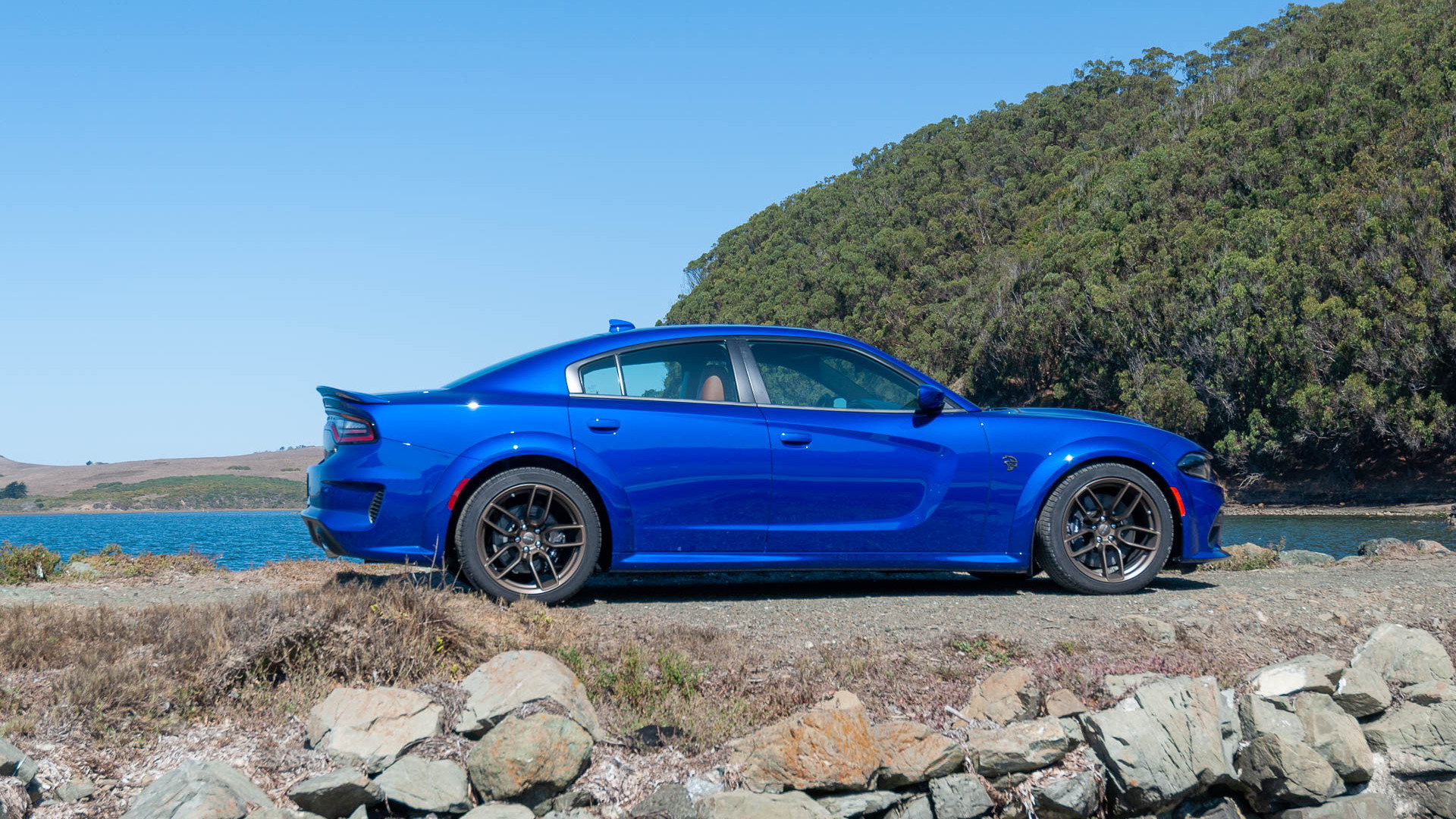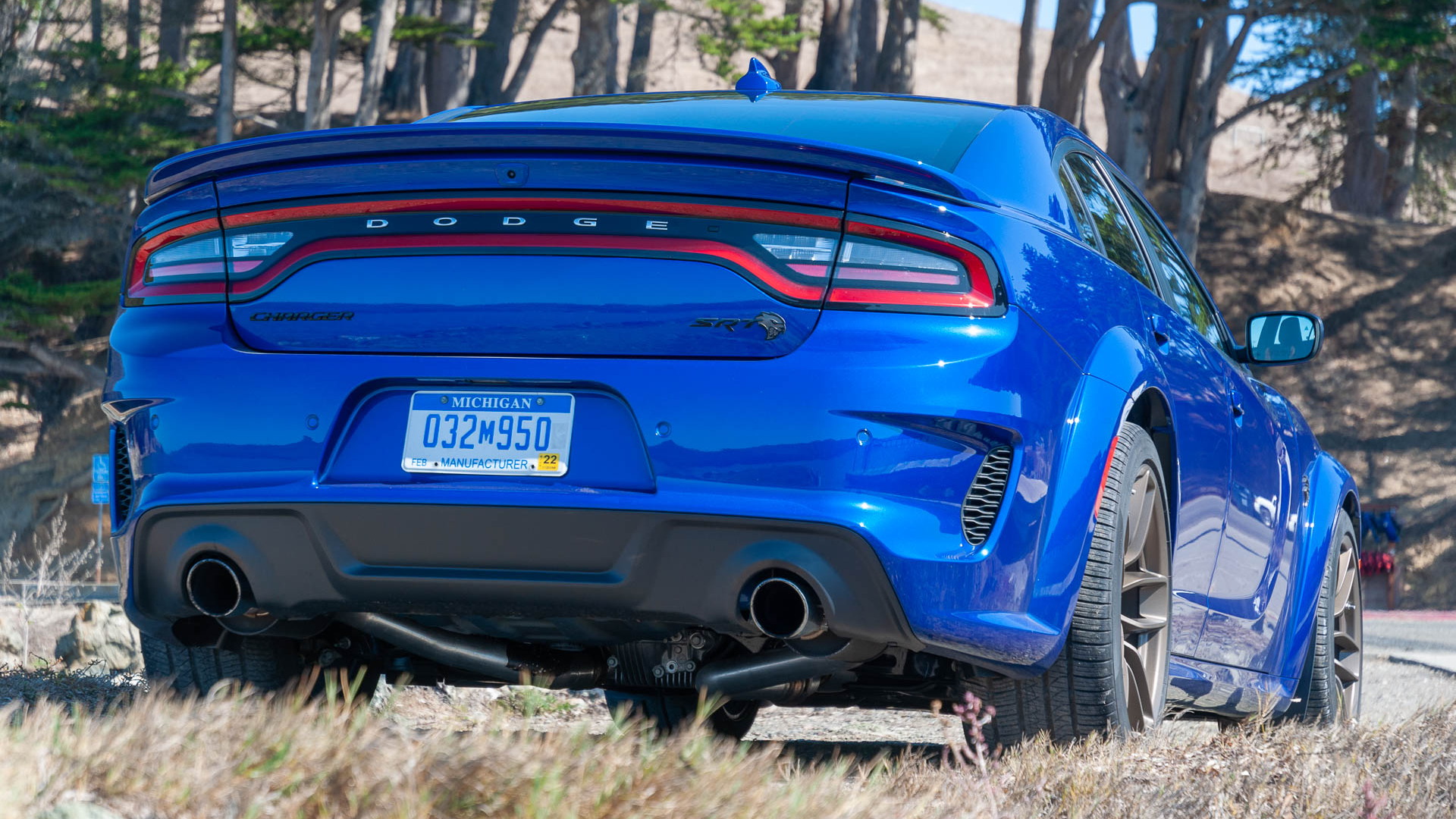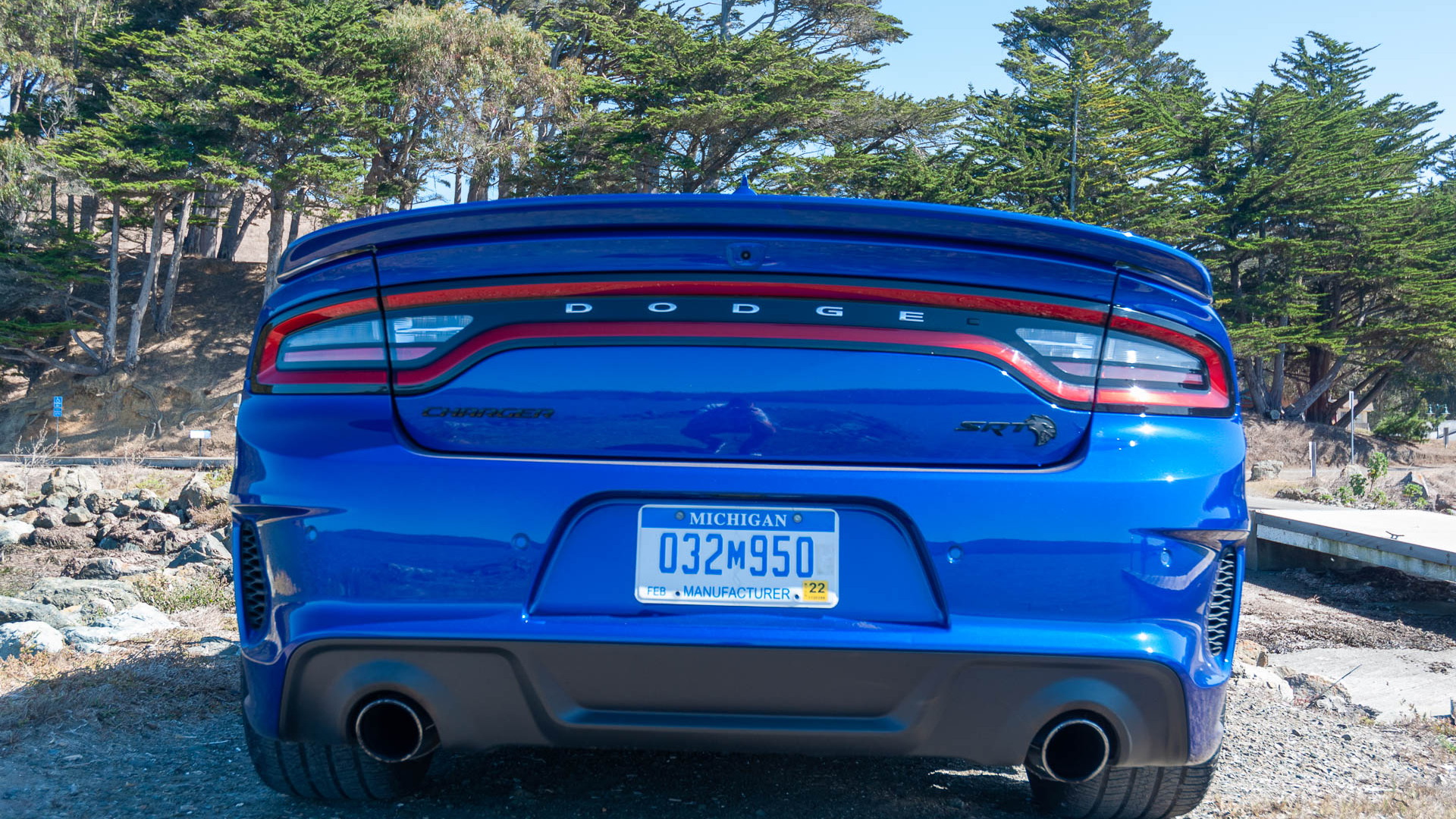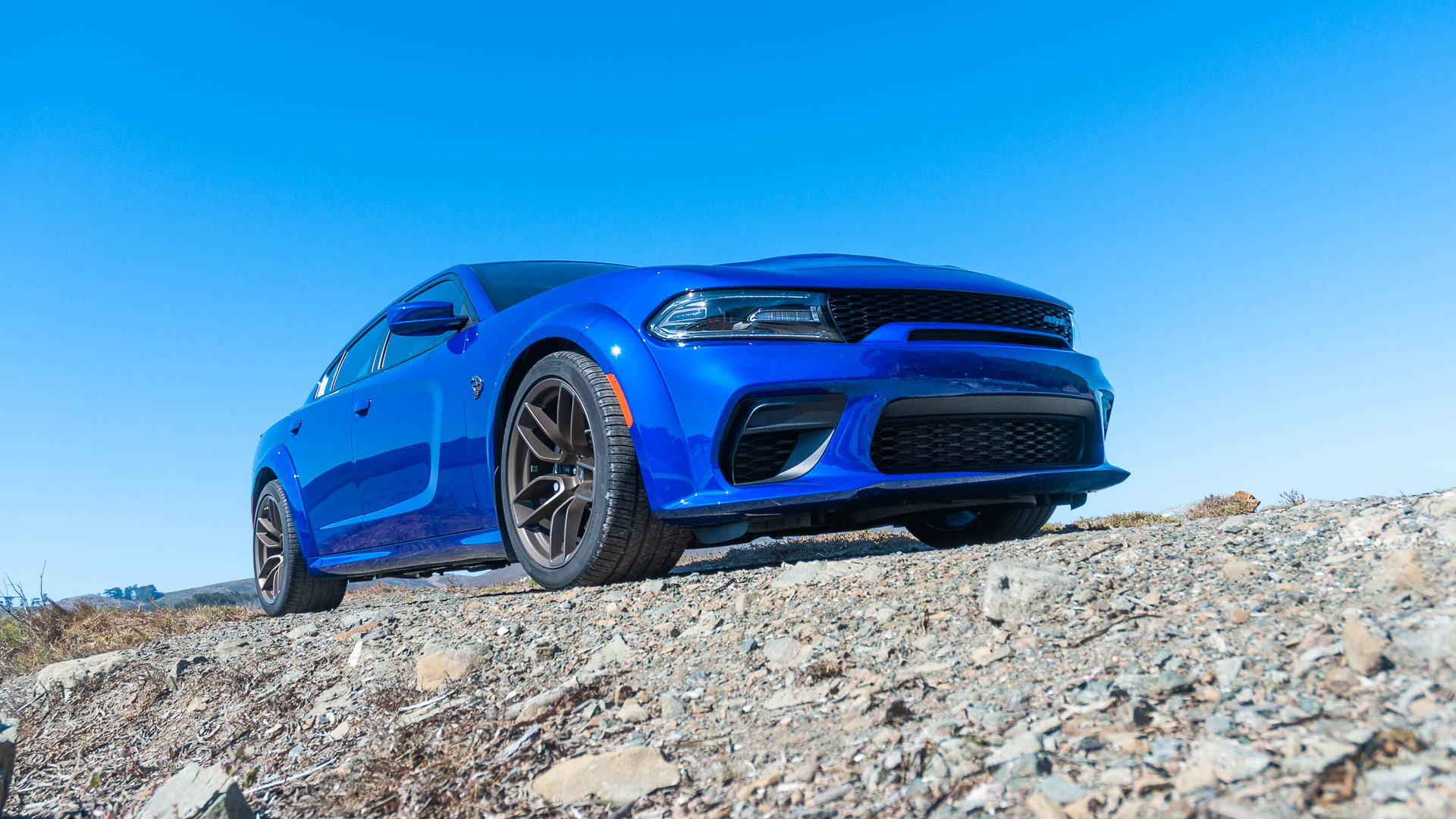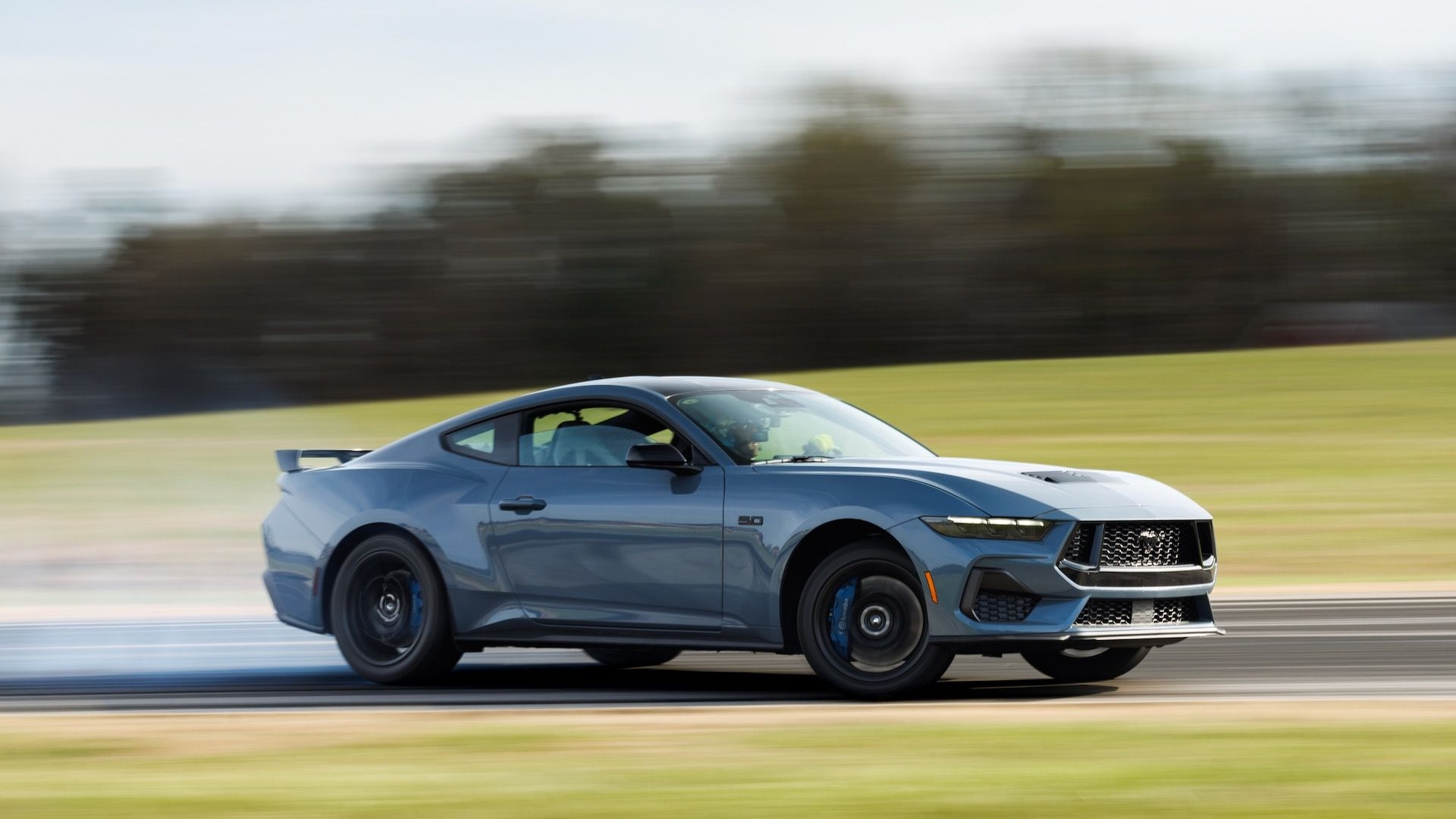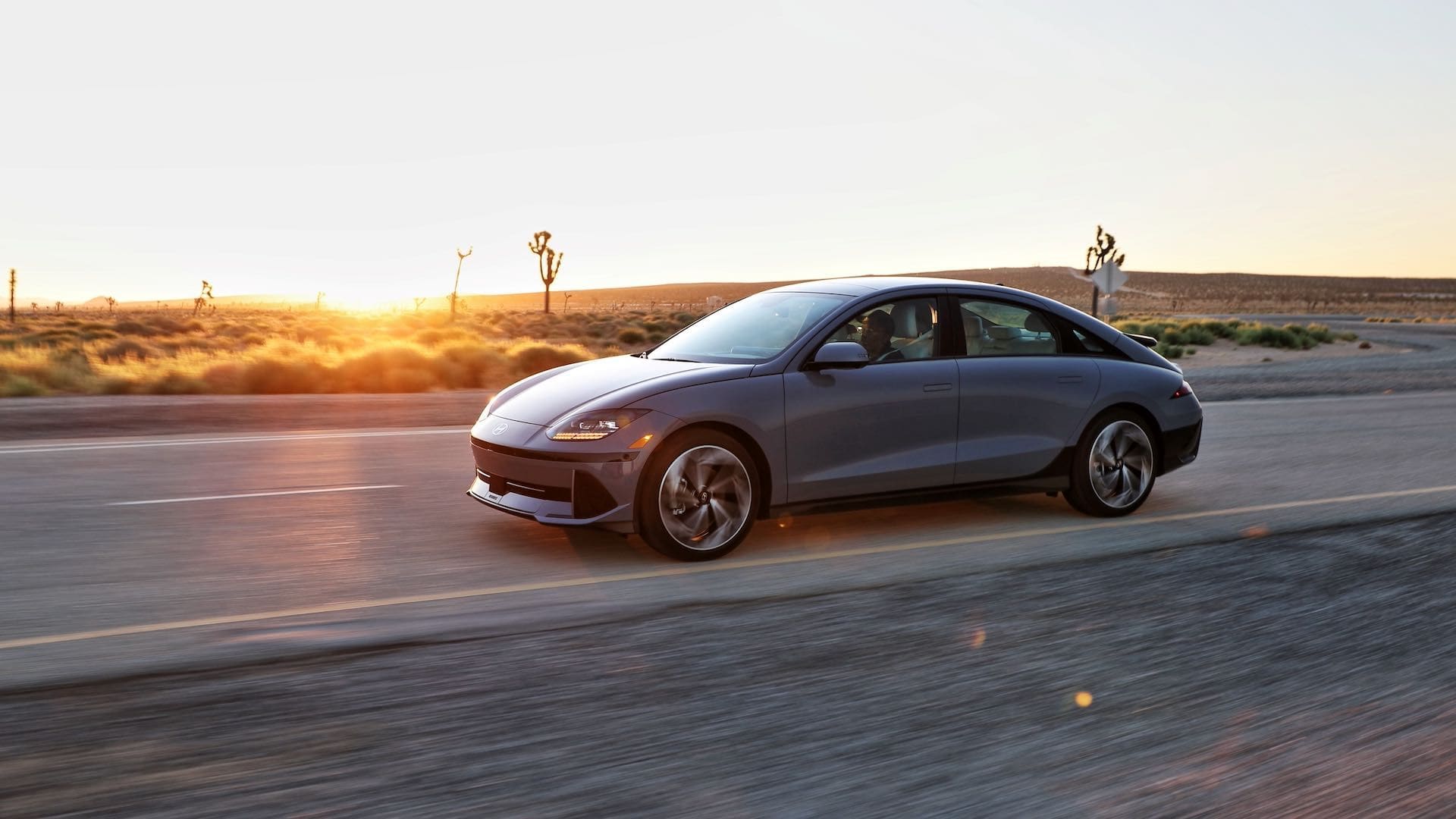The Dodge Charger SRT Hellcat’s calling card has always been its absurd 707 horsepower and rowdy attitude, but it’s desperately lacked traction. There’s a solution for that: more tire.
Enter the 2020 Dodge Charger SRT Hellcat Widebody. Dodge gave the new Charger Widebody wider, 305/35ZR20 Pirelli P Zeros at each corner, as well as a retuned suspension, improved aerodynamics, and new design details to make a car that defines American excess even more excessive. Is it all enough to make all that Hellcat power usable? Dodge invited me to drive the 2020 Charger Hellcat Widebody on the track at Sonoma Raceway and on the back roads of Napa, California, to find out.
Long story short, the Hellcat’s wider tires and retuned suspension help the overpowered devil put the power down, remain stable at speed, and grip better around corners, but this helaciously powerful sedan can still burn you.

2020 Dodge Charger SRT Hellcat Widebody
Wretched excess
As I exit turn 6 at Sonoma Raceway, roll into the throttle, and let the Charger Hellcat Widebody edge out to the right side of the track and set up for turn 7, I see the digital speedometer crest 85 mph. I look up and calculate that I can stay on the throttle.
It tops 100 mph just as the hood passes the first set of orange cones. I’ve entered the braking zone. I keep my foot in it.
I want to dance with the Hellcat’s new-found grip.
Another second passes, but it feels more like a minute. The supercharger whines like a grandmother screaming into a cell phone and 112 mph flashes across the cluster as I pass the halfway mark of the braking zone. Brakes, engaged!
The nose dives, but the rear remains stable, which is good because the cement outside wall is about a foot from the driver’s door. I manhandle the thick SRT leather-wrapped steering wheel to the right as the new electric-assist power steering does its best to transmit the feel of the massive Pirellis digging in while the big American sedan starts to rotate through the late-apex turn 7a. I lay a quarter of the way into the throttle, let the car come around, then get fully on the gas. If I don’t hit the apex just right the Hellcat won’t be set up to properly link together turn 8 and 8a.
Brake. Wait. Breathe. Turn. Wait. Partial throttle. Rotate. Full throttle. Now it’s time to link 8 and 8a, known as the esses, together.
I brake too late for turn 8, and that means I’m carrying too much speed, which can be a common problem with any Hellcat. Dang.
Now I have to hit the brakes between 8 and 8a, which makes the tail twitch right as the nose goes left. Slight correction and throttle out.
This dance continues for nearly two hours, but it only took one lap to know that even 305s at all four corners have limits and 707 horsepower is hard to harness especially given the Charger’s 4,586-pound mass.

2020 Dodge Charger SRT Hellcat Widebody
W.I.D.E.
The powertrain formula hasn’t changed for 2020. The Charger Hellcat Widebody's throbbing heart is still a 6.2-liter V-8 with a 2.4-liter supercharger huffing 11.6 psi of boost to help create a ridiculous 707 hp and 650 pound-feet of torque. All the power is sent to the rear wheels via a quick-shifting 8-speed automatic transmission with near telepathic programming. While we #GiveAShift at Motor Authority, this automatic nearly makes us forget about a three-pedal setup.
How that power goes to the ground has changed for 2020, with those 305/30ZR20 Pirelli P Zeros replacing the narrow body’s 275/40R20s, which were also P Zeros.
To take advantage of the larger contact patch, SRT engineers retuned the adaptive three-mode shocks, stiffened the front spring rate 32 percent, and swapped in larger 34 mm front and 22 mm rear hollow sway bars. It was all done in the name of keeping the large tires in constant contact with the pavement.
It worked. The Hellcat’s more stable at speed both on the street and the racetrack. While the Pirellis don’t tramline or seek out every road imperfection on Sonoma or the Napa back roads, I suspect they will when I get the new Widebody on broken Midwest pavement and seamed freeways.

2020 Dodge Charger SRT Hellcat Widebody
Be Aggressive, B.E. Aggressive
One look at the 2020 Charger Hellcat Widebody and it’s apparent what’s changed: It’s thick with attitude.
To house the wider tires the Charger Widebody is 3.5 inches wider than the narrow-body 2019 model thanks to additional fender flares. Design director Mark Trostle told Motor Authority the widebody’s flares are actually spot welded into the fenders to ensure a tight, lasting fit. That was a lesson learned from using automotive double-stick tape on Grand Cherokee flares that notoriously came loose.
The front and rear bumpers are also new, and the nose has a larger grille and lower air intakes to gulp in air to cool the 707-hp monster under the hood. The ducts at the corners of the front fascia feed fresh air to the front brakes, and the rear ducts are functional as well. A new rear spoiler adds 30 pounds of downforce, and there’s 40 lbs less lift up front thanks to revised aerodynamics.
Inside, the upper half of the dashboard and the tops of the door panels feature stitching and a new material with different graining. It’s shinier, and cheaper looking to the point that it evokes memories of Chrysler dashboard materials of the ’90s. On the plus side, matte-finish carbon-fiber trim is now available, as is a synthetic-suede headliner.

2020 Dodge Charger SRT Hellcat Widebody
Still a Hellcat
The 2020 Dodge Charger SRT Hellcat Widebody is big, heavy, and at $71,140 it’s not cheap. In fact, it’s $29,650 more than the better-balanced 2020 Dodge Charger Scat Pack Widebody and more than double the price of a base 2020 Charger.
Its platform can be traced back decades, but that doesn’t change the fact that the Hellcat Widebody can put up crazy, supercar-like numbers. It’s a family sedan that can hit 196 mph, sprint from 0 to 60 mph in 3.6 seconds, pull a 10.96-second quarter mile, and grip to the tune of 0.96 g on the skid pad. It can also take your kid to soccer practice or the family out for dinner at Applebee’s.
The Dodge Charger Hellcat needed more tire to control its ridiculous 707 hp. For 2020 it has the wider rubber it needed as well as an attitude adjustment, but it’s still a handful because this is America and sometimes we like to get rowdy.
Fiat Chrysler Automobiles paid for travel and lodging so Internet Brands Automotive could bring you this first-hand report.
